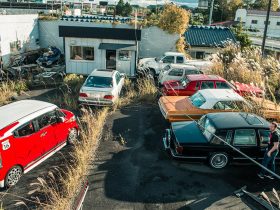The nozzle on the end of your fire fighting hose can affect how far water travels and how deeply it penetrates burning material. Nozzles come in a variety of shapes and sizes that support different firefighting applications.
Each fire nozzle has an expected gallonage at a rated pressure. The more gallons available, the greater the reaction force.
Flow Rate
The size of the orifice in a fire fighting nozzle controls the flow of water out of the nozzle. This flow creates water pressure that is converted to velocity, providing reach. Flow rate also controls the shape of the stream.
Flow range is determined by available pump capacity, hose lays and nozzle design. The nozzle should be capable of producing the required flow with normal engine pressures and hose lays.
Many fire departments have a target flow rate that is predetermined for their hoseline. A common target is 250 gpm for a 2 1/2-inch handline with a smooth bore nozzle with 1 3/16-inch tip. This nozzle and flow rate has been proven to produce an acceptable nozzle reaction of 65 pounds. This is an important factor as it reduces the nozzle weight needed to be physically handled by firefighters. This helps to alleviate the stress placed on nozzle workers and increases their workability. It also reduces nozzle reaction and allows more manpower to be used in the nozzle line.
Reach
The size of the nozzle’s orifice determines the flow of water. The restriction it creates at the end of the hose also changes water pressure to velocity. Velocity provides reach, which is necessary to get water to the fire area.
A nozzle firefighter who struggles with a high-flow handline nozzle that requires a large amount of physical exertion is not likely to be effective throughout an incident. Instructors typically recommend finding a nozzle that provides the proper combination of reach and flow for a crew to comfortably manage.
One option is the multipurpose nozzle, which offers a jet spray and fog stream at the same time or independently. This type of nozzle is often used for interior attacks, high rise attacks, CAF systems, foam applications and cooling fire areas. It can be operated at various water flows based on the fire situation and allows the engine officer to select a nozzle pressure without turning off the water flow.
Shape
The shape of a fire fighting nozzle impacts the nozzle’s ability to cool and extinguish a fire. The shape of the nozzle’s water stream determines its velocity, reach and direction. The shape of the nozzle’s droplets also impact its cooling effect.
For example, a smooth bore nozzle produces a solid stream of water with large drops that provide maximum reach and penetration. It also provides maximum water volume for the amount of pressure applied. This nozzle type is often used for initial fire attack.
However, a curtain nozzle provides a flat semicircular spray of water that offers more coverage for less force. This nozzle type is ideal for protecting fire fighters from radiated heat.
A nozzle firefighter must stay low, crouched or crawl when approaching the seat of the fire and must remain stationary while they operate the nozzle. This prevents them from being harmed by the hot fire gases or smoke and allows them to move more quickly in the area. A backup firefighter should be available to assist the nozzle firefighter and step in to take over if they become injured or fatigued.
Safety
A fire fighting nozzle is important because it controls the flow, reach and shape of water being used to suppress a fire. Whether it’s a single stream of water for penetration, a wide angle fog spray for radiant heat protection or something in between, the right nozzle can make a difference in how well you fight the fire.
The nozzle firefighter is your primary weapon and should be cared for just as you would care for any weapon. Keeping it clean and tested on a regular basis ensures it works when you need it most.
Two consequences often occur when conventional nozzles are supplied with inadequate flows. First, the tickling stream caused by weak flow can not reach or penetrate the seat of the fire. Secondly, excessive nozzle pressure makes it difficult for firefighters to handle and advance the hose line and potentially jeopardizes the safety of the nozzle crew. With an automatic nozzle, the discharge orifice continually adjusts based on the nozzle flow and sets the proper nozzle pressure and velocity for best fire fighting performance.




Leave a Reply